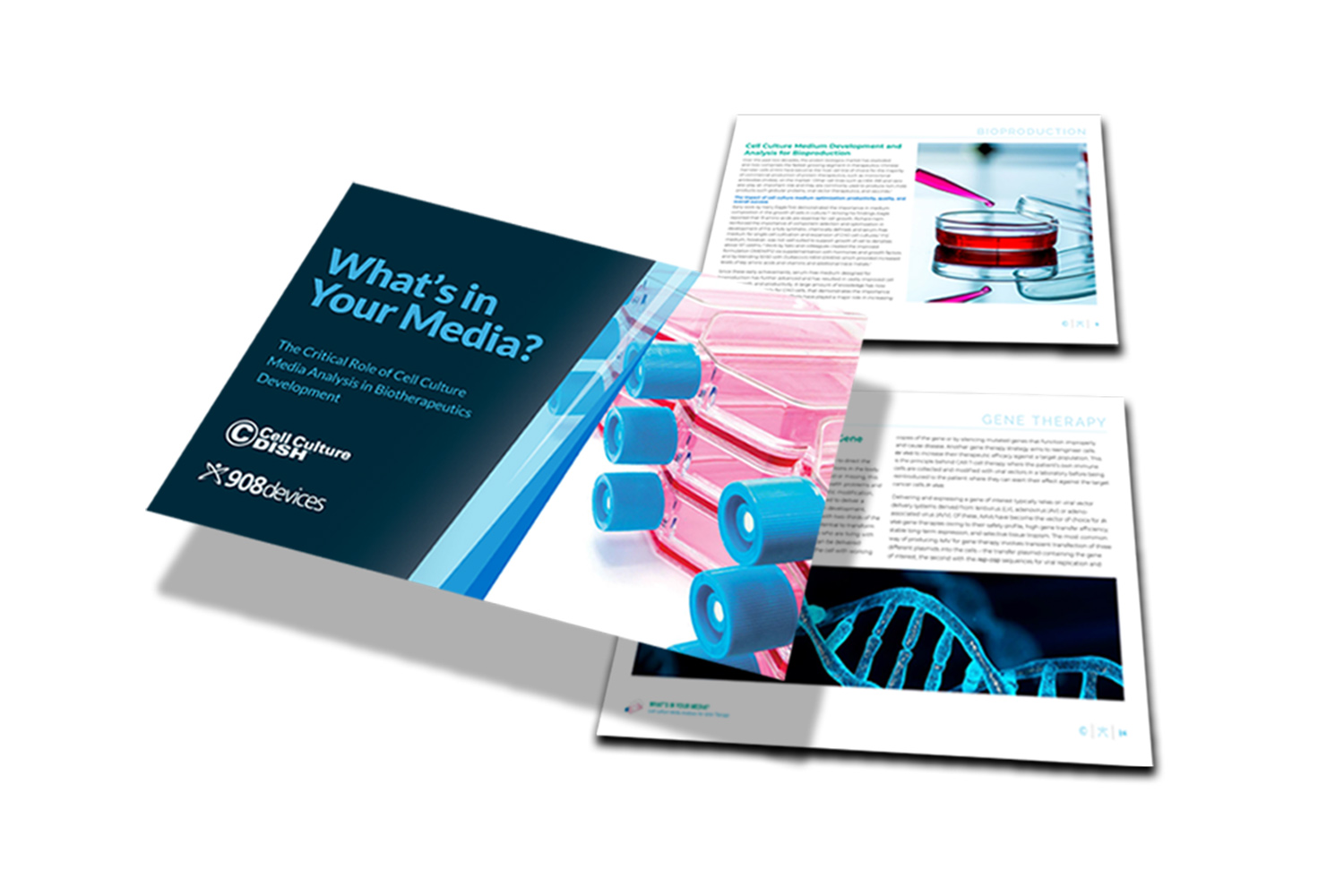Cell Culture Media Development >>
Challenges in Gene Therapy Process Development
Gene therapy development depends on process development to meet the demands
Read the other articles in this series:
Productivity for Plasmid DNA Production & Cell Culture Media Analysis
Viral Vector Manufacturing & Cell Culture Media Analysis
Cell Culture Media Impact on Viral Vector Scalability
Cell Culture Media Impact on Viral Vector Safety
The genes within our cells contain the necessary information to direct the production of proteins and enzymes to support normal functions in the body.
However, when a gene or part of a gene is defective, mutated or missing, this can disrupt normal functions manifesting in a number of health problems and diseases. Gene therapy aims to treat diseases through genetic modification, most frequently genetically engineered viral vectors are used to deliver a genetic payload to the cells. There are non-viral methods in development, however, viral vectors are still the most popular approach with two-thirds of the clinical trials to date delivered via viral vector.1 It has the potential to transform medicine and create new therapeutic options for patients who are living with difficult, and even incurable, diseases. The gene therapy can be delivered directly in vivo to affected cells through either providing the cell with working copies of the gene or by silencing mutated genes that function improperly and cause disease. Another gene therapy strategy aims to reengineer cells ex vivo to increase their therapeutic efficacy against a target population. This is the principle behind CAR T-cell therapy where the patient’s own immune cells are collected and modified with viral vectors in a laboratory before being reintroduced to the patient where they can exert their effect against the target cancer cells in vivo.
Delivering and expressing a gene of interest typically relies on viral vector delivery systems derived from lentivirus (LV), adenovirus (AV) or adeno-associated virus (AAV). Of these, AAVs have become the vector of choice for in vivo gene therapies owing to their safety profile, high gene transfer efficiency, stable long-term expression, and selective tissue tropism. The most common way of producing AAV for gene therapy involves transient transfection of three different plasmids into the cells – the transfer plasmid containing the gene of interest, the second with the rep-cap sequences for viral replication and capsid assembly, and the final helper plasmid contains the adenovirus helper functions.
The majority of approved gene therapies are targeted to rare diseases with niche patient populations but the hope is to design targeted therapies for more prevalent disease indications that affect larger patient populations. The increased investment and innovation in the gene therapy space holds great promise for patients but brings with it challenges for manufacturers to meet the high clinical and commercial demand. Gene therapy development thus depends on process development to meet the demands: plasmid production and intensified and better controlled AAV production in HEK293 cells. cGMP plasmid DNA is an essential starting material for viral vector production but current manufacturing strategies based on methods adapted from the basic research laboratory lack the efficiency and consistency to meet yield requirements. These same issues extend to viral vector manufacturers, resulting in high cost of goods (COGS) and bottlenecks along the entire supply chain for gene therapies. Manufacturers are working actively to simultaneously scale up manufacturing processes and increase host cell productivity aimed at addressing these challenges.
References
- Ginn, S. L., Amaya, A. K., Alexander, I. E., Edelstein, M. & Abedi, M. R. Gene therapy clinical trials worldwide to 2017: An update. J Gene Med 20, 3015 (2018).

On-Demand Webinar
The Critical Role of Cell Culture Media Analysis in CGT Development
Does cell culture analysis matter for CGT development? This short webinar explores what is already known, reviews at-line methods for cell culture media analysis, and shares recent data from two case studies.
Keep Reading About CGT Process Development

Download the E-Book
What’s In Your Media?
Take a deep dive into the role that cell culture media analysis plays across bioproduction, cell therapies, and gene therapies.

Easy to understand answers
No more waiting for third party testing
Accurate, reliable performance whether running 1 or 100 samples
Solution for Cell Therapy Process Development
The REBEL
At-line cell culture media analysis. Results on 30+ components in under 10 minutes. When and where is your call. With the REBEL, now is always on the table.
email Subscribe to Our Communications Signup to receive new product updates, technical tips and more.